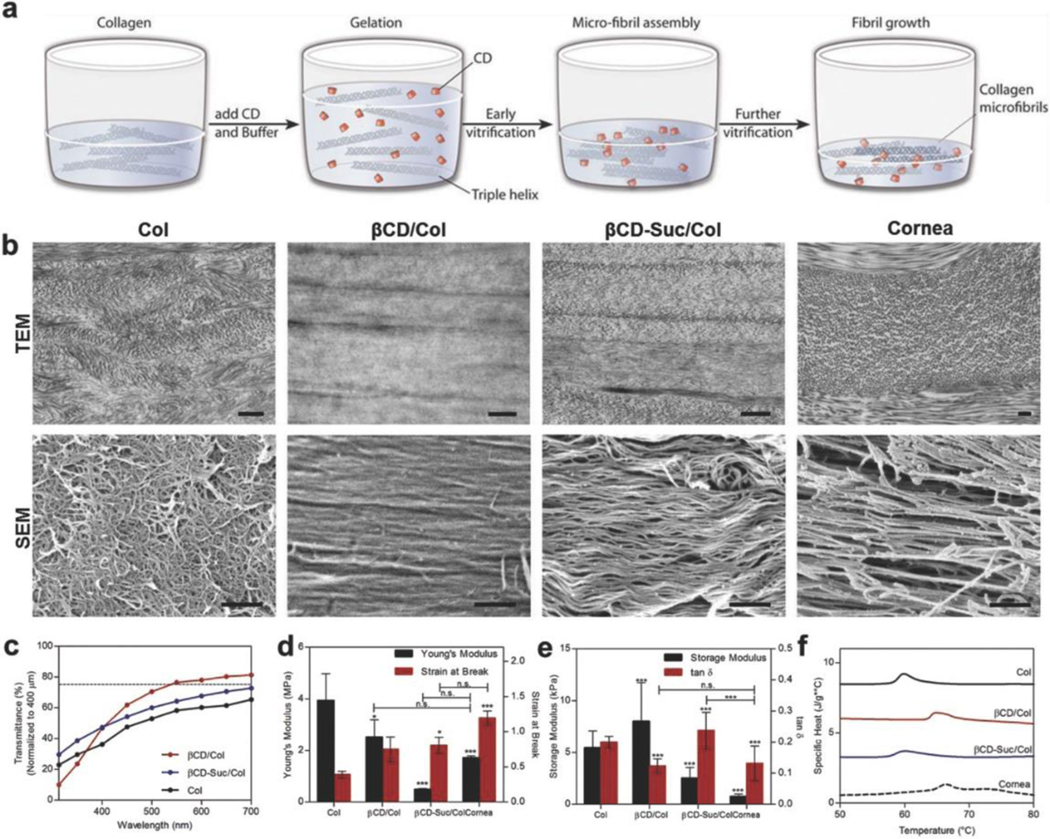Figure 2.
Cyclodextrin functional groups define collagen fibril organization, transparency and mechanical properties. a) Vitrigels manufactured by mixing equal volumes of collagen and CD-buffered solution causing gelation and microfibrillar assembly followed by fibril growth and reorganization during controlled dehydration (vitrification). b) Transmission electron microscopy and scanning electron microscopy of Col, βCD, and βCD-Suc, and native rabbit cornea, to demonstrate effect of CD functionality on collagen ultrastructure organization. Scale bar = 500 nm. c) Light transmission over visible light spectrum of vitrigel formulations (normalized to 400 μm) with and without cyclodextrins, d) Young’s modulus and strain at break measurements to monitor tensile properties of vitrigels following cyclodextrin incorporation. e) Oscillatory rheological properties of vitrigel formulations with cyclodextrin functionalization. f) Differential scanning calorimetry thermograms to determine thermal stability of vitrigels following incorporation of CD. Data are means ± SD, n ≥ 3 (representative of at least two independent experiments), analysis of variance (ANOVA) with Bonferroni’s post-test: ***P < 0.0001, **P < 0.001, *P < 0.01 compared against Col unless otherwise specified.

